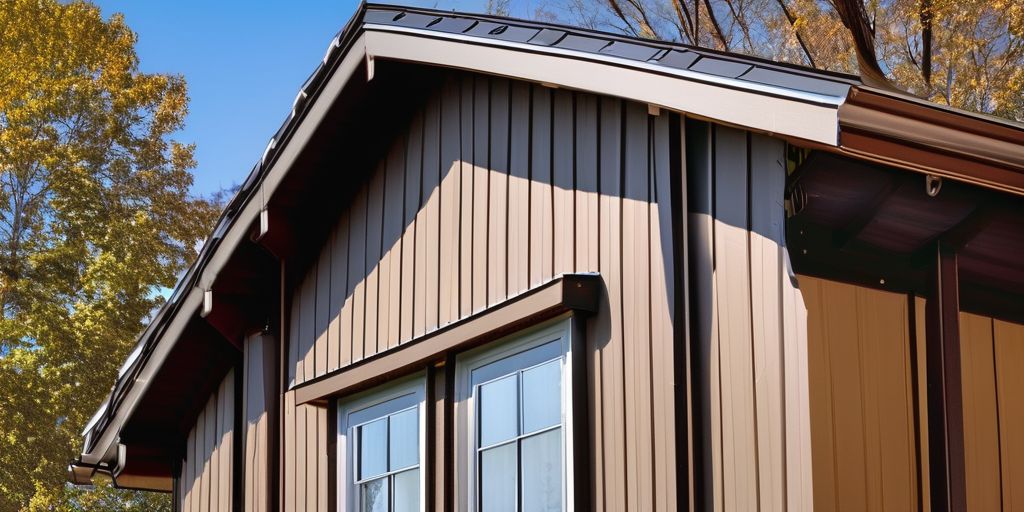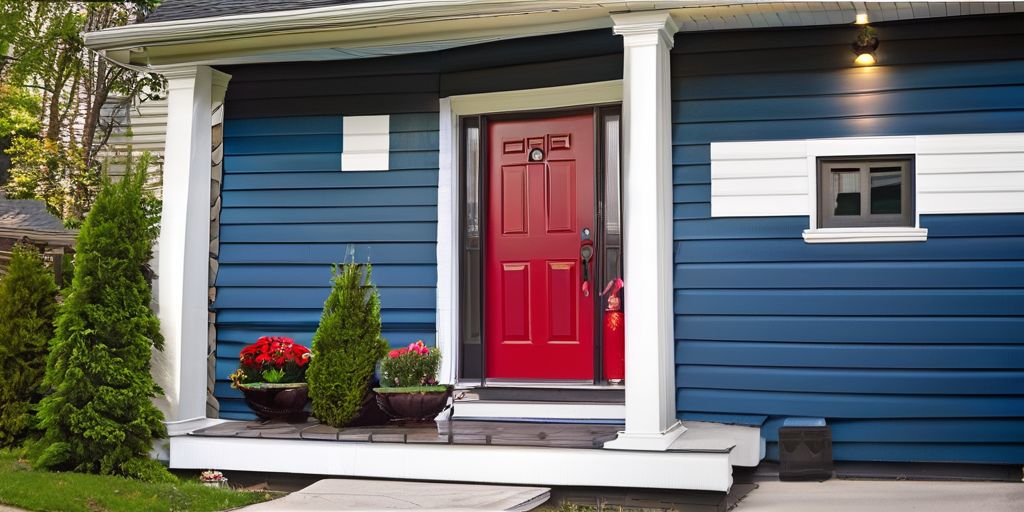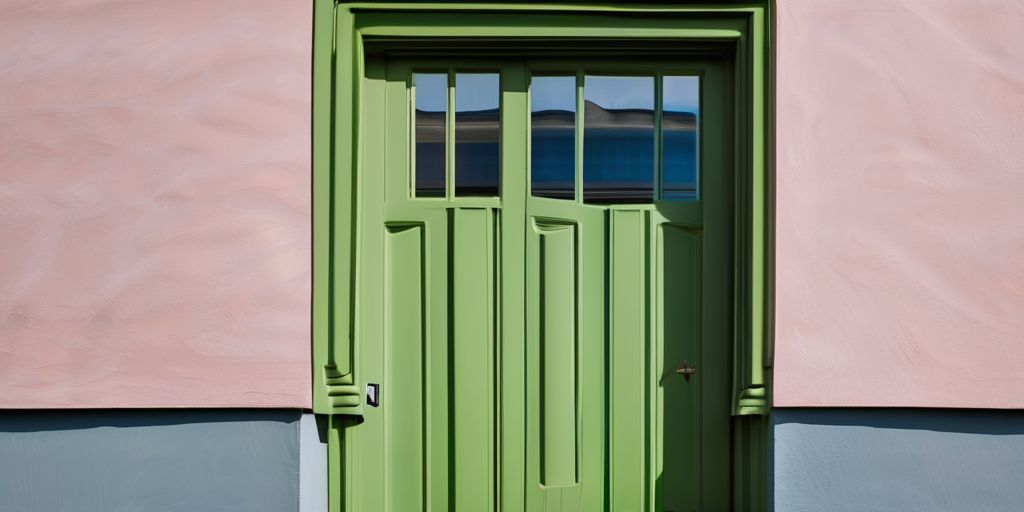Ever wondered why your paint job didn’t turn out as expected? Well, knowing how long paint takes to dry is a big deal, whether you’re a weekend DIY warrior or a seasoned pro. A lot of things can mess with drying times – the type of paint, the weather, and even what you’re painting on. Getting it right means your paint will stick better and last longer. So, let’s dive into the nitty-gritty of what affects paint drying times and how you can make sure your project turns out great.
Key Takeaways
- Different paints dry at different speeds; water-based ones are usually quicker.
- Temperature and humidity play a big role in drying time.
- Proper ventilation can speed up the drying process.
- Always check if the first coat is dry before adding another layer.
- Using quality paint can save you time and headaches.
Factors Influencing How Long Does It Take Paint to Dry
Type of Paint and Its Impact on Drying Time
Different types of paint have unique drying times. Water-based paints are known for their quick drying, often touch-dry in just a couple of hours. Meanwhile, oil-based paints take longer, sometimes needing a full day to dry completely. Enamel paints, which come in both water and oil-based forms, might take even longer. Acrylics, on the other hand, are fast-drying, making them a popular choice for quick projects.
Environmental Conditions: Temperature and Humidity
Temperature and humidity play a major role in paint drying times. Ideal conditions are usually between 50°F and 85°F, with low humidity. High temperatures can cause paint to dry too fast, leading to issues like brush marks. On the flip side, low temperatures and high humidity can slow the drying process, possibly causing mildew.
Surface Material and Preparation
The material of the surface being painted affects drying times. Wood, if not properly primed, can absorb paint and extend drying times. Metal surfaces generally dry quicker, but this can vary with paint type. Drywall offers average drying times but needs proper prep for the best results.
Ventilation and Airflow
Good airflow is essential for paint to dry properly. Opening windows or using fans can help speed up the process by helping solvents evaporate more quickly. This is especially crucial when using oil-based paints, as they tend to dry slower.
Understanding Different Types of Paint and Their Drying Times
Water-Based Paints: Quick and Convenient
Water-based paints, often called latex paints, are a favorite for many because they dry quickly and are easy to work with. Typically, they become touch-dry in about 2-4 hours. Their fast drying time can be super handy if you’re painting indoors and need to move furniture back quickly. Plus, they’re easy to clean up with just soap and water, making them an environmentally friendly choice. If you’re painting in a place like Burlington, where the humidity can vary, water-based paints adapt well, ensuring a smooth finish.
Oil-Based Paints: Durable but Time-Consuming
Oil-based paints are known for their durability and rich finish, but they require a bit more patience. They usually take about 6-8 hours to become touch-dry and can take up to 24 hours to fully cure. This type of paint is ideal for surfaces that need to withstand more wear and tear, like doors and trim. The cleanup, however, is more involved, needing mineral spirits or turpentine.
Enamel Paints: Long-Lasting Finish
Enamel paints offer a hard, glossy finish that stands the test of time. These can be either water-based or oil-based, affecting their drying times. Generally, enamel paints take longer to dry compared to other types, so it’s important to check the manufacturer’s instructions. They’re perfect for surfaces that need a tough, protective coating.
Acrylic Paints: Fast-Drying Option
Acrylic paints dry incredibly fast, often within 15 minutes to touch-dry, though they typically need about 2 hours before you can apply a second coat. They’re a go-to for quick projects and are easy to clean up, similar to water-based paints. Acrylics are versatile and come in various finishes, suitable for different surfaces and artistic endeavors.
Understanding the drying times of different paints is essential for planning your painting project effectively. Whether you’re using quick-drying acrylics or durable oil-based paints, knowing the drying time helps you manage your schedule and achieve the best results.
Practical Tips for Achieving Optimal Paint Drying Results
Proper Surface Preparation
Getting your surface ready before painting is like laying a good foundation. Make sure the surface is clean, dry, and primed. This helps the paint stick better and dry faster. Here’s what you can do:
- Clean the surface thoroughly to remove dust, grease, or old paint.
- Use a primer if needed; it helps the paint adhere well.
- Sand the surface to smooth out any imperfections.
Using the Right Tools and Techniques
The tools you use can make a big difference. A good brush or roller helps apply paint evenly. Here’s how to choose the right ones:
- Use high-quality brushes or rollers for a smooth finish.
- Opt for rollers on large surfaces for even application.
- Keep a variety of brushes for corners and detailed areas.
Applying the Correct Paint Thickness
Applying paint too thick or too thin can mess with drying times. Stick to the manufacturer’s guidelines:
- Apply thin, even layers of paint.
- Avoid overloading the brush or roller.
- Allow each coat to dry properly before adding another.
Enhancing Ventilation for Faster Drying
Good airflow is key to drying paint quickly. In Burlington, you can take advantage of the fresh air by opening a window or two:
- Use fans to keep the air moving.
- Open windows to let fresh air in.
- Avoid painting in humid conditions, as it slows down drying.
When painting, patience and preparation are your best friends. Take the time to get things right, and you’ll enjoy a great finish that lasts.
Common Mistakes to Avoid When Considering How Long Does It Take Paint to Dry
Rushing the Drying Process
One of the most common mistakes is rushing to the next step before the paint is fully dry. Patience is key to a smooth finish. Touching the paint too soon can lead to fingerprints or smudges, ruining your hard work. It’s tempting to want to see the final result quickly, but giving your paint ample time to dry is crucial.
Ignoring Environmental Factors
Environmental conditions play a huge role in how quickly paint dries. Temperature and humidity levels can either speed up or slow down the drying process. For instance, painting in high humidity can extend drying times, while a well-ventilated room can help paint dry faster. Also, extreme temperatures can affect paint adhesion, so aim for mild weather when planning your project.
Applying Multiple Coats Too Soon
Applying a second coat before the first is completely dry can lead to uneven surfaces and longer drying times. Always follow the manufacturer’s recommendations for drying times between coats. This might mean waiting a few hours or even a day, depending on the type of paint used.
Using Low-Quality Paints
Not all paints are created equal. Low-quality paints might save you money upfront, but they can lead to issues like poor coverage and longer drying times. Investing in a good quality paint can make a big difference in the outcome and durability of your project. Remember, a quality finish starts with quality materials.
Taking the time to understand these common pitfalls can save you from a lot of frustration and ensure your painting project turns out just the way you envisioned. Whether you’re painting a room in your home or tackling a bigger project, avoiding these mistakes will help you get the best results.
Benefits of Understanding How Long Does It Take Paint to Dry
Efficient Project Planning
Knowing how long paint takes to dry can really help you plan out your painting projects better. You’ll avoid running out of paint or having too much leftover. Plus, it keeps things moving smoothly, so you’re not stuck waiting for walls to dry before you can move on to the next step. This can be especially handy if you’re trying to paint a large area, like a basement, and need to consider waterproof paint as an affordable option.
Achieving a High-Quality Finish
When you understand drying times, you can make sure each coat of paint is applied at just the right moment. This way, every layer sticks properly and looks great. Rushing through and adding coats too quickly can mess up the finish, leading to an uneven look or even peeling. Patience here is key to a professional-looking result.
Avoiding Unnecessary Delays
By timing your painting tasks with drying times in mind, you avoid unnecessary waiting around. This is especially important if you’re painting in a place like Burlington, where weather can be unpredictable. You wouldn’t want to start painting just as a cold snap hits, right? Keep an eye on the forecast and plan accordingly.
Maximizing Paint Longevity
Paint that’s allowed to dry properly will last longer. This means fewer touch-ups and a longer-lasting finish. If you’re using exterior paints, understanding environmental conditions like temperature and humidity is also crucial. It ensures your paint adheres well and stays looking fresh for years.
Taking the time to learn about paint drying times not only saves you headaches but also helps you achieve the best possible outcome for your projects. It’s a small step that makes a big difference.
How to Test If Your Paint Is Dry and Ready for the Next Step
Touch Test: Simple and Effective
One of the most straightforward ways to check if your paint is dry is the touch test. Here’s how you can do it:
- Wait for at least two hours after applying latex paint, or six hours for oil-based paints.
- Gently press your fingertip against the painted surface.
- If no paint sticks to your finger and the surface feels dry, you’re good to go. If it feels tacky or leaves residue, give it more time.
Remember, environmental factors like humidity and temperature can affect drying times. On a humid day, for instance, you might need to wait a bit longer.
Visual Inspection for Evenness
Besides the touch test, a visual inspection can help ensure even drying. Look for areas that appear glossy or wet. These spots might need more time.
- Check for consistent color and sheen across the surface.
- Pay attention to corners and edges, as they might dry differently.
Timing Guidelines for Different Paints
Different paints have different drying times. Here’s a quick guide:
| Type of Paint | Touch Dry Time | Ready for Next Coat |
|---|---|---|
| Latex | 1-2 hours | 4 hours |
| Oil-Based | 6-8 hours | 24 hours |
| Enamel | 2-4 hours | 8-10 hours |
| Acrylic | 30 minutes | 2 hours |
Always refer to the manufacturer’s instructions for precise times.
Manufacturer’s Recommendations
Manufacturers know their products best, so it’s wise to follow their guidelines for drying times. They often provide specific instructions based on the paint’s formulation.
"Patience is key in painting. Rushing can lead to smudges and uneven finishes."
In Burlington, where the weather can be unpredictable, it’s especially important to consider these guidelines. A landmark like the Church Street Marketplace, with its vibrant colors, might inspire you to take your time and ensure your paint job is just as stunning.
Wondering how to check if your paint is dry and ready for the next step? Visit our website for tips and expert advice on ensuring your painting project goes smoothly!
Wrapping It Up: Your Guide to Paint Drying
So, there you have it! Knowing how long paint takes to dry isn’t just for the pros—it’s something anyone can master with a bit of patience and the right info. Whether you’re sprucing up your living room or tackling a big project, remember that the type of paint, the surface, and even the weather can all play a part. Give your paint the time it needs, and you’ll be rewarded with a finish that’s smooth and long-lasting. And hey, if you’re ever in doubt, just take a step back, let it dry a little longer, and enjoy a coffee break. Happy painting!
Frequently Asked Questions
How long does paint usually take to dry?
Paint drying time can vary based on the type of paint and environmental conditions. Generally, water-based paints dry to the touch in 1-2 hours, while oil-based paints may take 6-8 hours.
What factors affect paint drying time?
Several factors influence paint drying time, including the type of paint, temperature, humidity, and the surface being painted. Proper ventilation also helps speed up the process.
Can I speed up the paint drying process?
Yes, you can speed up drying by ensuring good airflow, using fans, and painting in a warm, dry environment. Avoid applying thick layers of paint to help it dry faster.
Why is my paint taking so long to dry?
Paint may dry slowly due to high humidity, low temperatures, or poor ventilation. Using thick coats of paint can also lengthen drying time.
Is it okay to apply a second coat of paint before the first one is dry?
No, it’s important to wait until the first coat is completely dry before applying a second coat. Applying too soon can lead to a messy and uneven finish.
How can I tell if my paint is dry enough for another coat?
You can perform a touch test by gently pressing your finger to the painted surface. If it feels dry and doesn’t leave a mark, it’s usually safe to apply another coat.






